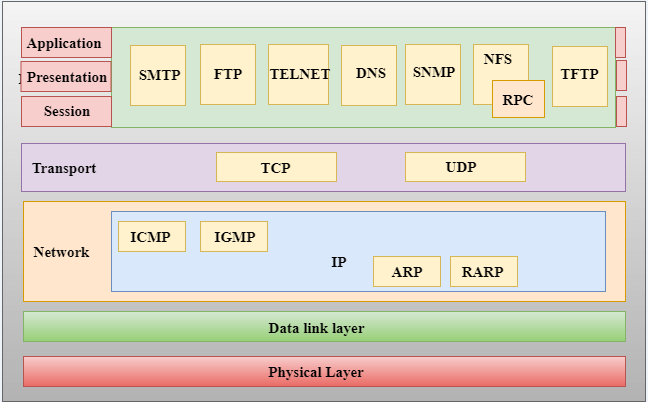TCP/IP: The Networking Backbone

TCP/IP (Transmission Control Protocol/Internet Protocol) provides a wide range of services that are crucial for communication and data transmission over networks, including the internet. These services are implemented through various protocols within the TCP/IP suite. Here are some of the key TCP/IP services: 1. Transmission Control Protocol (TCP): As mentioned earlier, TCP is a connection-oriented protocol that offers reliable, stream-oriented data delivery. It breaks down data into smaller segments, numbers them for proper sequencing, and ensures that data is correctly received at the destination. TCP handles error correction, flow control, and congestion control, making it suitable for applications where data integrity and accuracy are paramount, such as web browsing, file transfer (FTP), email (SMTP), and more. 2. User Datagram Protocol (UDP): UDP is a connectionless protocol, unlike TCP. It provides a simple, lightweight way of sending data packets without establishing a connection first. While UDP lacks the reliability features of TCP (such as error recovery and retransmission), it is preferred for real-time applications and situations where a slight loss of data is acceptable, such as online gaming, video streaming, and VoIP (Voice over Internet Protocol). 3. Internet Protocol (IP): IP is the backbone of the TCP/IP suite. It handles the addressing and routing of data packets across networks. IP ensures that data packets are correctly forwarded to their intended destination based on IP addresses. IPv4 (Internet Protocol version 4) and IPv6 (Internet Protocol version 6) are the two main versions of IP in use, with IPv6 addressing the limitation of IPv4's address space. 4. Domain Name System (DNS): DNS is a critical service that maps human-readable domain names (e.g., www.example.com) to their corresponding IP addresses. Since computers communicate using IP addresses, DNS acts as a distributed database that helps translate domain names into IP addresses, making it easier for users to access websites and services by using memorable names. 5. Dynamic Host Configuration Protocol (DHCP): DHCP is responsible for dynamically assigning IP addresses and other network configuration parameters (subnet mask, default gateway, DNS server) to devices on a network. This automatic address assignment simplifies network administration and allows devices to join a network without manual configuration. 6. File Transfer Protocol (FTP): FTP is a protocol that enables the transfer of files between a client and a server over a TCP/IP network. It allows users to upload and download files, making it a fundamental service for sharing data across the internet. Hypertext Transfer Protocol (HTTP): HTTP is the foundation of data communication on the World Wide Web. It enables web browsers to request and retrieve web pages, images, videos, and other resources from web servers. HTTPS (HTTP Secure) is a secure version of HTTP that uses encryption to protect data during transmission. 7. Simple Mail Transfer Protocol (SMTP): SMTP is the standard protocol used for sending and receiving email messages. It ensures that emails are transmitted between mail servers and delivered to the appropriate recipient's mailbox. Post Office Protocol version 3 (POP3) / Internet Message Access Protocol (IMAP): POP3 and IMAP are protocols used by email clients to retrieve email messages from a mail server. They allow users to access and manage their email from various devices while keeping messages synchronized. 8. Simple Network Management Protocol (SNMP): SNMP is a network management protocol that allows administrators to monitor and manage network devices, such as routers, switches, and servers. It provides a standardized way to collect and organize information about network devices and their status. These are just a few examples of the many services that TCP/IP provides. Each of these services plays a crucial role in enabling the functionality and interconnectedness of modern networks and the internet.